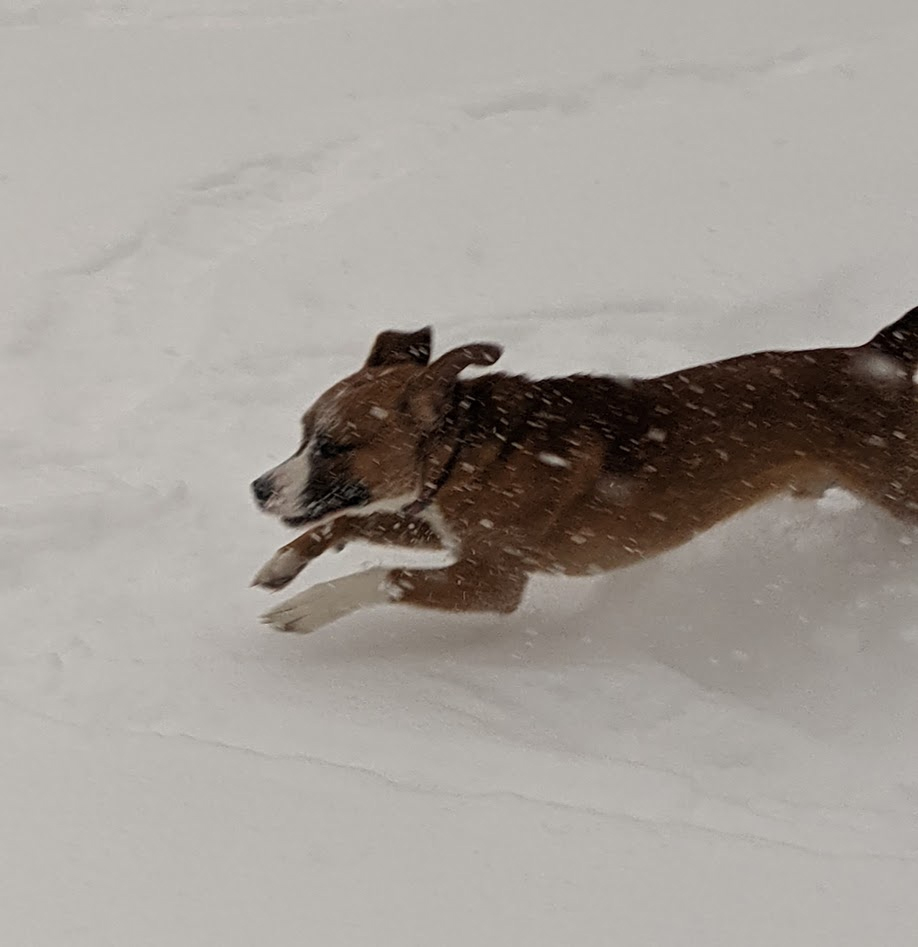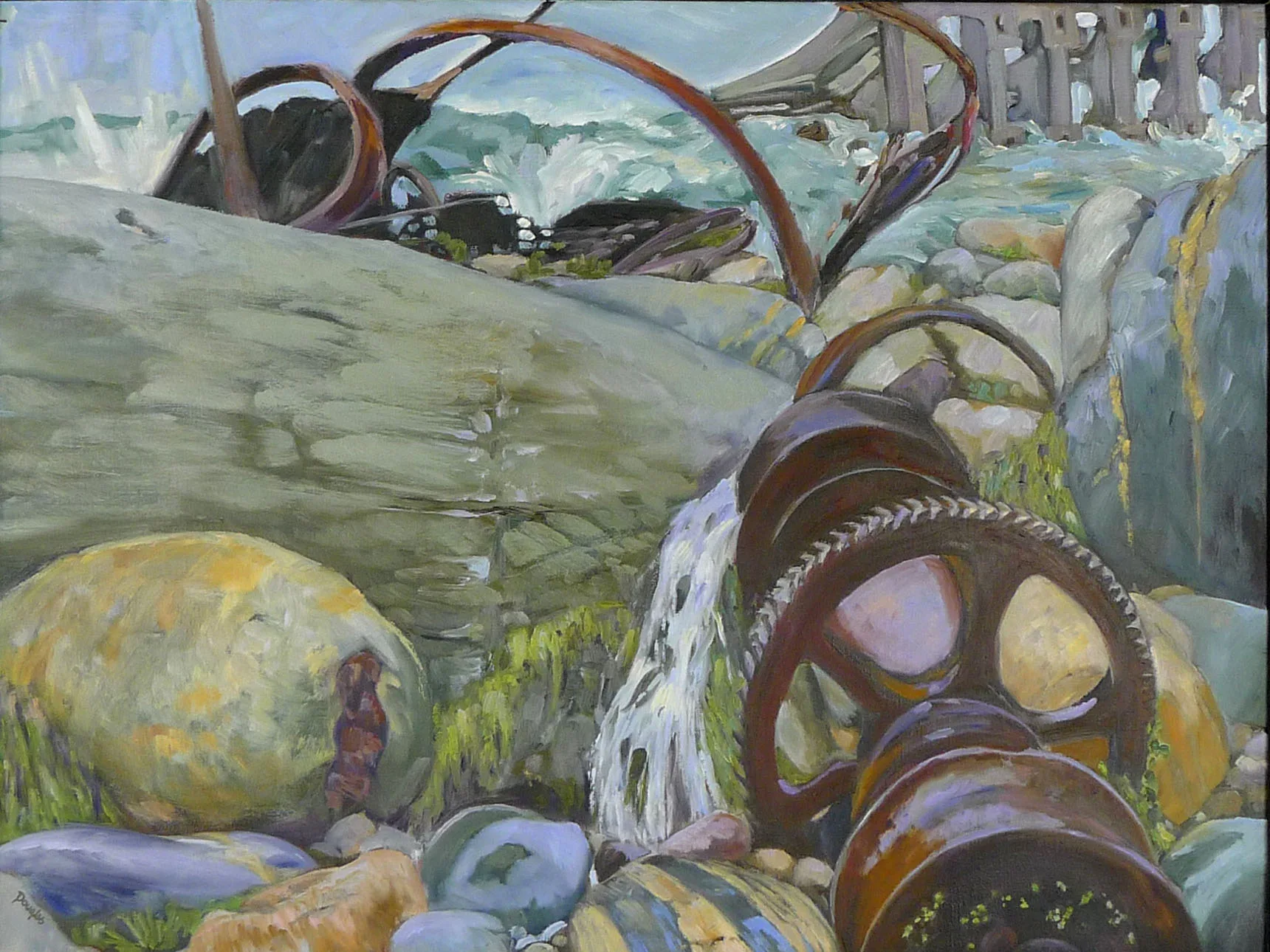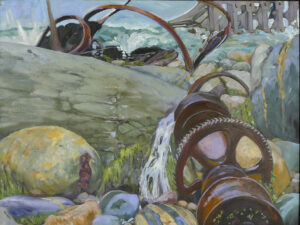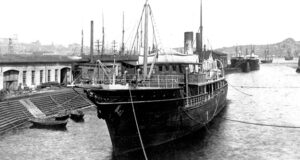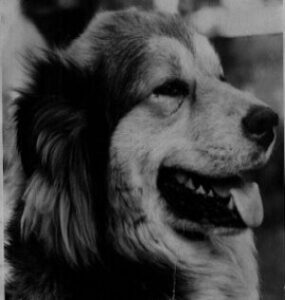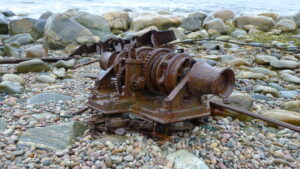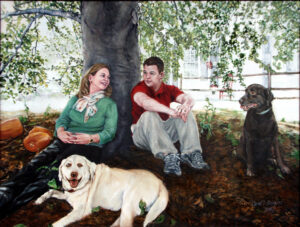
Dogs make lovely painting companions. Before I could bring my daughter along on painting trips, I camped and painted with my Jack Russell Terrier for company. He was a pleasant traveling companion (most dogs are), and he acted as an Early Warning System. As artists’ head are often in the clouds, painting with dogs is helpful.
I’ve never been approached by a bear or a threatening person while painting. At the hoary old age of 65, however, my left hook ain’t what it used to be. I appreciate the security painting with dogs provides.
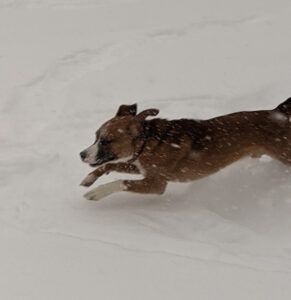
My current dog, Guillo, is a mutt with a very calm disposition. He’s happiest when he’s with his people and he’s uncritical of even my worst daubs.
Of course, you must provide your painting pup with the basics: water, shade, and, if appropriate, food. In my state, a dog can be unleashed if under voice control, but that’s not true everywhere. Even here I have a tie-out in my truck. I wouldn’t let him roam free next to a busy road or near farm animals.
Painting with dogs isn’t always trouble-free. I periodically run across daft dog owners. This week it was the owner of a senescent Basset Hound whom I met while hiking. The human kicked and stomped at Guillo as we passed. That’s a self-fulfilling prophecy, as my friend Catharine would say. Guillo made a wide circle around her, but another dog might have answered her aggression in kind.

It’s your problem to keep your dog (and yourself) under control. “He just wants to be friends,” is no excuse when your dog has jumped up far enough to have given a thorough pelvic exam.
Earlier this year, Catharine was knocked down by a German shepherd, resulting in injuries that took weeks to heal. “What if that had happened to an elderly person?” she asked. (She’s 76.)
How do you know if your dog is a good boy? (Here’s a satirical answer to that question.) If you hear yourself say, “I’m sorry, he never does that!” it’s time for training. If you hear yourself say it twice, you’re the problem.
In a lifetime of dogs, I’ve broken up more than my share of fights. Twice, I’ve been bitten hard enough to break the skin. Both times were preventable.
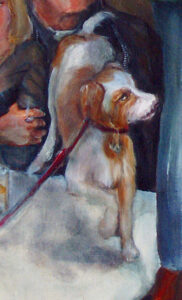
Dogs are simple empaths; they’re sensitive to the emotional states of people, and they only have two responses to threats: fight or flight. These are deeply ingrained in the evolutionary history of all animals, including us (although we can occasionally talk our way out of trouble).
Since 80% of Americans live in urban or suburban areas, our dogs spend much of their lives leashed. That cuts off the flight option, meaning that stressed dogs learn to react to threats with aggression.
A smart person learns to identify hyper-alertness, muscle tension (raised hackles), growling and barking as signs of a stressed dog. The trouble is, these can also be signs of an excited or playful dog. It sometimes takes some nous to know the difference.
If you have a highly-excitable dog who reacts badly to strangers, he might not be the best candidate for painting with dogs. But if you have a laid-back mutt, he’ll make great company.
My 2024 workshops:
- Painting in Paradise: Rockport, ME, July 8-12, 2024.
- Sea & Sky at Schoodic, August 4-9, 2024.
- Find your authentic voice in plein air: Berkshires, August 12-16, 2024.
- Art and Adventure at Sea: Paint Aboard Schooner American Eagle, September 15-19, 2024.
- Immersive In-Person Workshop: Rockport, ME, October 7-11, 2024.

